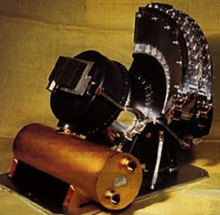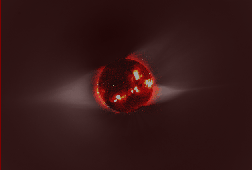Click on image for full size
Courtesy of the University of Maryland Space Physics Group
SWICS Instrument Page
The SWICS (Solar Wind Ion Composition Spectrometer) instrument on Ulysses is to measure the frequency of occurence, temperature and mean speed of all the major solar wind ions, from Hydrogen through Iron. Another principal aim of the Ulysses mission is to investigate the solar wind originating at the polar coronal holes. These regions of the Sun are known to emit high-speed streams (HSST's) of solar wind. Theoretically, the polar coronal holes are thought to produce solar wind of high, but steady speed. This polar wind is also thought to be of steady composition, unlike the composition of lower-latitude solar winds. The SWICS instrument is directly involved in investigating these theories.
The spacecraft has already collected data at each pole. Though scientists are still receiving and processing data, it is already clear that the solar wind parameters in the HSST were much more uniform than in the solar wind at lower latitudes. This is supporting evidence for the aforementioned theories.
SWICS has two channels for analyzing the solar wind ions. The main channel identifies particles using a combination of electrostatic deflection, post-acceleration, time-of-flight (TOF), and residual energy measurement. With this technique, the mass and charge are determined seperately, so that different ions can be distinguished from each other. The auxiliary channel consists of a solid state detector (SSD) and yields counting rates as a function of energy-per-charge. Both of these capabilities are important for studying processes in the solar wind source region, the place in the chromosphere and corona where the solar wind originates.
One interesting fact about the SWICS instrument is that it measures the composition, temperature, and velocity of solar wind ions of speeds ranging from 175 km/s (H+) to 1280 km/s (Fe+8). Compare these to the velocity of Ulysses, the fastest space probe to date travelling at 11.3 km/s!









